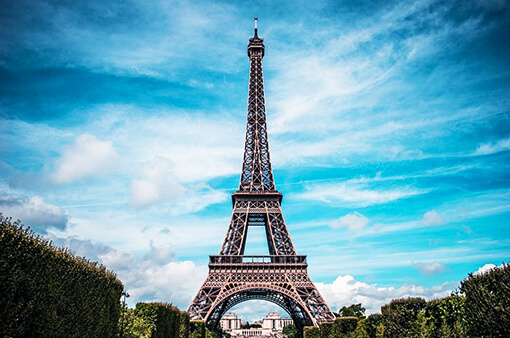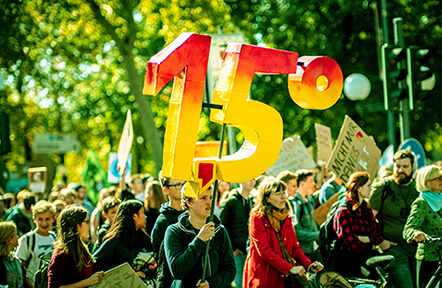Hi! It’s konkaz (@konkazuk).
The Paris Agreement, a long-term framework for climate action beyond 2020, was adopted at COP21 (the 21st Conference of the Parties to the UNFCCC) in 2015 and came into force in 2016.
As a result, countries around the world have come together to reduce greenhouse gas emissions and work to mitigate the effects of global warming.
In this article, we will review the key points of this important agreement, which serves as the successor to the Kyoto Protocol.
Overview of the Paris Agreement

We will now go through three essential components of the Paris Agreement: limiting temperature rise, national emission reduction targets (NDCs), and support measures from developed countries.
1. Target for limiting global temperature rise

When we hear about the Paris Agreement, the first thing that comes to mind is…
its goal of keeping global temperature rise since the Industrial Revolution below 2°C, ideally within 1.5°C.
If global temperatures exceed 1.5°C, the impacts of climate change — such as heatwaves, floods, and rising sea levels — will accelerate. If temperatures rise beyond 2°C, irreversible changes will occur, leading to consequences that humans can no longer stop.

In January 2025, the global average temperature reached 1.7°Cabove pre-industrial levels. At this rate, we are not only surpassing the 1.5°C threshold but also heading towards 2°C, making the predicted crisis a reality. 💦
According to the IPCC report, achieving carbon neutrality by 2050 — meaning absorbing emitted CO₂ through forests and technology to reach net-zero emissions — is necessary to keep global warming within 1.5°C.
To meet this goal, countries have set greenhouse gas reduction targets for 2030.
2. Each country’s emission reduction goals (NDCs)

The submission of greenhouse gas reduction targets, called “NDCs” (Nationally Determined Contributions), has been made mandatory for all countries, with updates required every five years.
As of February 2025, here is an overview of the NDC commitments from various countries:
⚫United States (NDC submitted to the UN on December 16, 2024)
Pledges a 61– 66% reduction in GHG emissions from 2005 levels by 2035.
⚫United Kingdom (NDC submitted and updated as of February 2025)
Plans to reduce GHG emissions by 78% from 1990 levels by 2035.
⚫European Union (No new NDC submission as of February 2025)
Aims for a 55% reduction in GHG emissions from 1990 levels by 2030.
⚫France (No new NDC submission as of February 2025)
Committed to the EU-wide target of a 55% reduction in GHG emissions from 1990 levels by 2030.
⚫Germany (No new NDC submission as of February 2025)
Adheres to the EU’s 55% GHG reduction target from 1990 levels by 2030.
⚫China (No new NDC submission as of February 2025)
Plans to reach peak CO₂ emissions by 2030 and achieve carbon neutrality by 2060.
⚫Japan (No new NDC submission as of February 2025)
Aims to cut GHG emissions by 46% from 2013 levels by 2030.
⚫Brazil (NDC submitted as of February 2025)
Targets a 50% reduction in GHG emissions from 2005 levels by 2030.
Unfortunately, on 20 January 2025, the Trump administration took office and announced a second withdrawal from the Paris Agreement. Since the formal exit process takes about a year, the U.S. is currently undergoing the withdrawal process and is expected to fall outside the Paris Agreement’s framework.
The primary opportunity for nations to present their next NDCs will be COP30, which is scheduled to take place in Brazil this November.
3. Support measures by developed countries

Developed countries reaffirmed their commitment to providing $100 billion* (approximately 15 trillion yen) annually to developing nations for climate action, as agreed at COP15 in 2009.
*This target remained unmet at $83.6 billion as of 2020 but was finally reached in 2022, two years behind schedule.
As a result, developing countries are making progress in adopting renewable energy and strengthening disaster preparedness through the Green Climate Fund (GCF).
Additionally, the Adaptation Fund was established to support climate adaptation measures such as flood and drought resilience. This includes providing clean technology and training experts to help developing nations take independent action on greenhouse gas reduction and climate change mitigation.
🔹What makes the Paris Agreement a historic milestone?
In the 1997 Kyoto Protocol, only developed countries were required to reduce greenhouse gas emissions, while developing nations had no such obligations. However, under the 2015 Paris Agreement, all participating countries are required to set emission reduction targets and take concrete actions.
Furthermore, as mentioned earlier, a key innovation was the introduction of a system where each country submits its own Nationally Determined Contribution (NDC) based on its circumstances and reviews it every five years. This has established a framework for the international community to continuously strengthen climate action.
As a result, the Paris Agreement is considered a major milestone in international climate efforts.
That wraps up today’s topic on the Paris Agreement.
Bye now.
konkaz
*You can read this blog post in Japanese from the link below.
👉 パリ協定とは?COP21で決まった温暖化対策のキーポイントを解説

